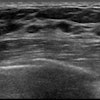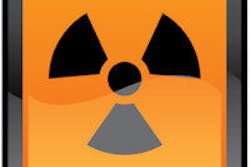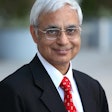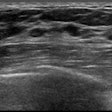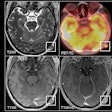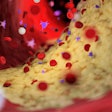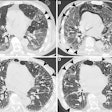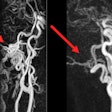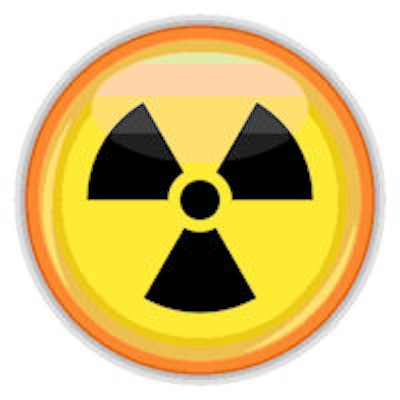
New research from Italy has identified an alarming lack of awareness of radiation protection among radiographers, as well as providing a checklist of practical steps to improve dose awareness.
The survey of 780 radiographers, thought to be the first of its kind in Italy, was conducted in 2014. Only 12.1 % of participants attended radiation protection training courses on a regular basis, while 56.4 % said they rarely took such courses and 31.5 % admitted they had never taken them.
Urgent action is required for radiographers to improve their knowledge of radiation protection, and specific measures should be considered, according to lead author Fabio Paolicchi, PhD, radiographer and dose team manager in the Department of Diagnostic and Interventional Radiology at Azienda Ospedaliero Universitaria Pisana in Pisa. His article was posted online on 23 November by Insights into Imaging.
Although 90% of radiographers thought they had sufficient awareness of radiation protection, most of them underestimated the radiation dose of almost all radiological procedures. About 5% of respondents thought pelvic MRI exposed patients to radiation, 4% believed abdominal ultrasound involved radiation, and 7% thought mammography does not use ionizing radiation.
Around half of the participants believed radiation-induced cancer is not dependent on age or gender and were not able to differentiate between deterministic and stochastic effects. Also, young radiographers (with less than three years of experience) showed a higher level of knowledge compared with more experienced colleagues.
Reasons for lack of know-how
Data were obtained from a survey given to radiographers at several educational courses, workshops, and meetings held in different Italian regions throughout 2014. The sample was equally distributed across four different areas of Italy (i.e., north, central, south, and islands). Participants were asked to complete the survey at the start of their course. The questionnaire was completed in the presence of an examiner and collected immediately after completion.
Paolicchi and his colleagues list the following potential causes of the lack of awareness of dose:
Lack of proper preparation within university courses. Recently, Italian radiographers' associations and Italian universities have worked in cooperation to improve teaching, but maybe further steps can be taken.
Poor training events for staff already in employment and lack of interest in the participants, especially concerning more senior staff.
The increasingly difficult training caused by the growth of technological complexity, which requires radiological staff to completely reconsider their knowledge.
Lack of accountability, as doses are usually not collected in a unique management tool and performances are not evaluated taking dose into account.
Training must be performed on a regular basis by professionals with certified expertise, focusing on dosimetry concepts and optimization measures, dose reference levels, radiation protection rules, new research studies, and relevant publications, the authors noted. Working as a team is also an essential prerequisite to avoid wrong practices and to constantly verify the appropriateness and the optimization of daily examinations.
Findings 'no great surprise'
Since 2003, a number of other publications have demonstrated inadequate awareness about radiation protection and knowledge of radiation doses among different professionals, including radiologists, cardiologists, and referring physicians, so these findings related to Italian radiographers were not a great surprise, Paolicchi told AuntMinnieEurope.com in an email. As reported in the literature, this lack of awareness is widespread, but obviously the inaccuracy among Italian radiographers is of particular concern. As specialists who receive (or should receive) training in radiation dose, risk, and safety, it was expected that they would demonstrate a satisfactory knowledge.
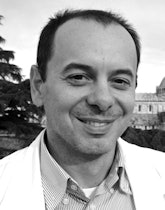 The plan now is to compare dose awareness among radiographers working in different countries, Paolicchi said.
The plan now is to compare dose awareness among radiographers working in different countries, Paolicchi said."We hope our work can represent a starting point to investigate the causes of this lack of knowledge and to plan specific actions in order to improve this situation," he stated. "The next step is to complete the validation of the questionnaire not only for radiographers but also for other professionals."
Furthermore, the Pisa group is planning to involve other European societies in this study in order to compare the level of knowledge of radiographers working in different countries. They hope to focus attention on radiological students' knowledge of radiation protection by means of the same questionnaire. The aim is to compare the knowledge of medical students, radiology residents, and radiography students in a teaching hospital. Preliminary results show an increase of the score, demonstrating that a valid formation received in the university courses can produce better outcomes.
The authors admit their work has limitations. First of all, the questionnaire was distributed mainly during courses, meetings, and workshops, so the sample refers to this specific population. The study does not take into account the data depending upon the type of radiography training, the duration of the university course, and the number of years that have passed since the first degree. Finally, additional information is missing about the medical sector in which radiographers have worked during their careers.


